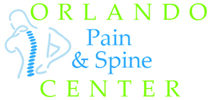What is it?
Sacroiliac (SI) joint dysfunction is a common source of pain in the lower back, buttocks, groin, and legs. These generalized symptoms, however, can be easily confused with other causes of back pain. The SI joint injection enables physicians to confirm that irritation or damage to the SI joint is the source of your symptoms. This precise diagnostic tool is also a therapeutic procedure, offering significant pain relief.
SI joints connect the pelvic bones to the spine. They are small and don’t move much, but they absorb all the forces of the upper body before balancing and transferring the weight to the hips and legs. When one or both of these joints become irritated or injured, they can cause chronic discomfort and pain. SI joint injections can accurately pinpoint and alleviate this pain.
Guided by fluoroscopy (x-ray imaging), a pain specialist injects a local anesthetic into the affected SI joint. If the anesthetic relieves your pain, this confirms the diagnosis. A corticosteroid medication is also injected. This strong, long-acting medicine reduces inflammation and provides pain relief over an extended period of time.
How Long does the Procedure Take?
SI joint injections are safely performed on an outpatient basis. The procedure typically requires 20 to 30 minutes, including preparation time, and is followed by a short period of observed recovery time.
What are the Expected Results?
Immediate but temporary pain relief (lasting a few hours) may occur from the local anesthetic. The benefit from the corticosteroid medicine will typically occur two to four days following the procedure and may last for several months. Although they are not a cure, SI joint injections are very effective in reducing inflammation of the joint and providing considerable to complete pain relief for an extended period of time. For even longer lasting benefits, sacroiliac denervation by RFA is an excellent approach in selected patients with very promising results, advanced regenerative procedures, such as prolotherapy and platelet rich plasma (PRP) therapy, may be recommended. These innovative techniques promote healing and the potential for permanent improvement.
